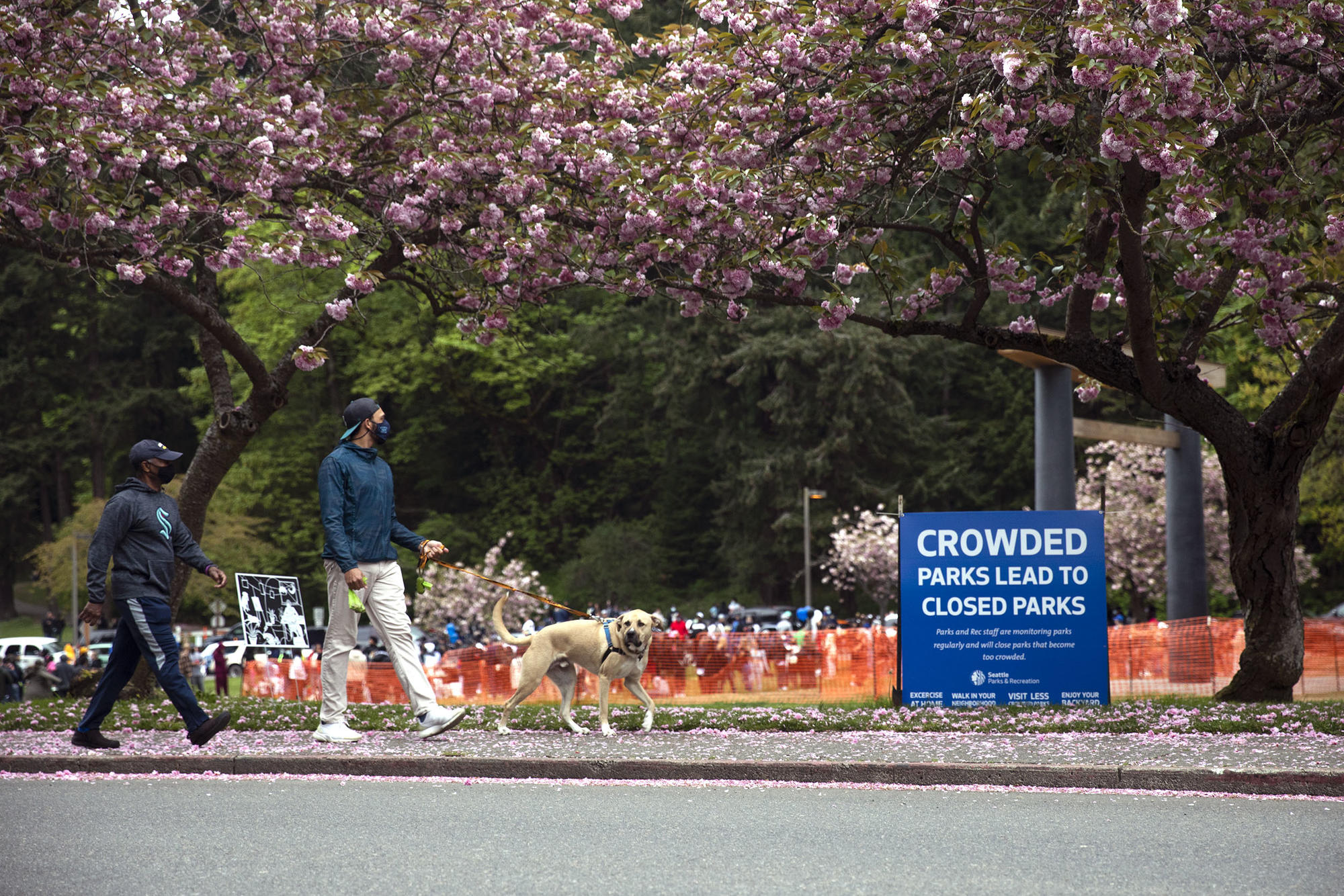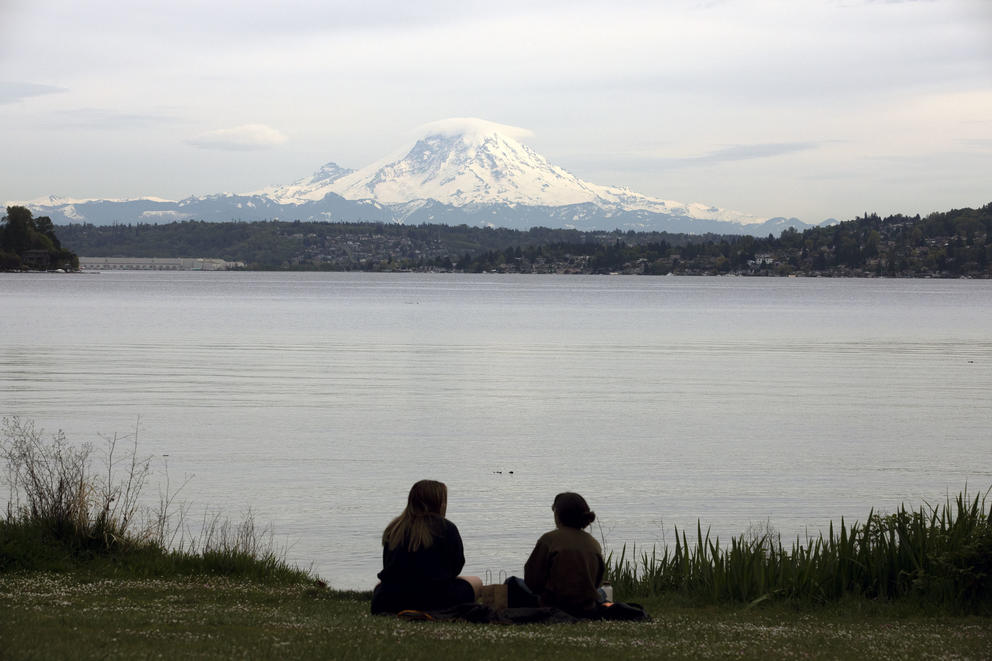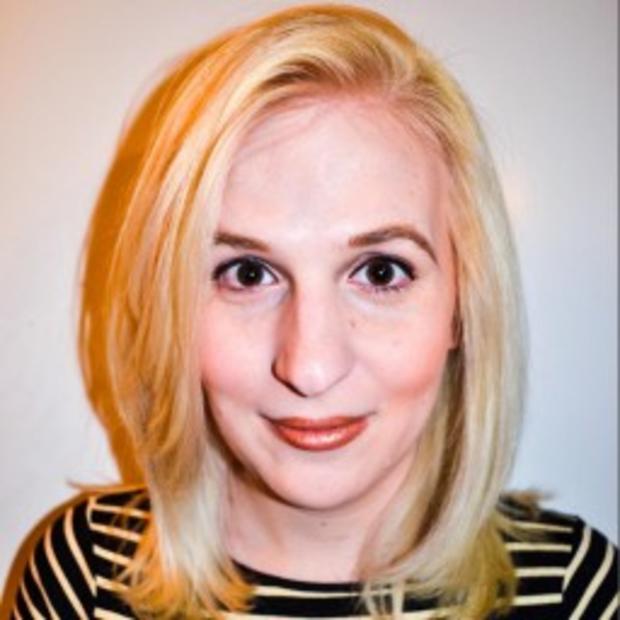And you might have wondered: Am I going to my favorite park — or am I traveling back in time to last March? In 2021, as Seattleites get vaccinated, and as the science of COVID-19 transmission comes into even sharper focus, it’s time to do away with implicit threats of park closures and parking lot restrictions. They made a lot more sense during the uncertainty of spring 2020 than they do now. We should also relax a bit about people passing each other on walking paths or picnicking on the beach, as affirmed by recent guidelines from the Centers for Disease Control and Prevention.
The pandemic isn’t over yet, and King County may have to revert to Phase 2 to finish it off, but at this point we can stop pretending like outdoor interactions are playing a significant part in perpetuating it. If anything, we should probably be telling people to do as much of their socializing outdoors as humanly possible, so we can keep transmission low while the remainder of the population gets vaccinated.
But Seattleites have been getting some mixed messages on that front. In mid-April, for example, Public Health — Seattle & King County echoed messaging from Gov. Jay Inslee by tweeting that we should #TakeItOutside, “whether it’s enjoying a coffee, taking a walk with an old friend, or any other recreation you’ve got going on.”
You should “move any activity you have planned outdoors,” the account urged.
Just days before that message, however, Seattle Parks and Recreation struck a very different tone on social media, tweeting that it would be “collecting data in the parks to determine if parking lot [and] park hour limits will be needed in the near future.”
“NOBODY wants a repeat of last summer,” Seattle Parks warned.
So, which is it: Should we go outside — or should we avoid some of our largest and most popular parks to prevent further restrictions? And why is the city still threatening park closures on some park signs at a time when Seattleites are already — judging from my nighttime strolls though Capitol Hill — pushing the capacity limits at many bars and restaurants to their maximum, engaging in what is essentially one of the riskiest activities for unvaccinated people?
Science clearly favors open air: Outdoor transmission of COVID-19 is rare. Passing someone on the sidewalk is low risk. Prolonged and unmasked face-to-face contact can still spread COVID-19 outdoors, but otherwise it’s very hard to transmit the virus on the kind of day that sends Seattleites flocking to parks. A park that might look crowded can still be full of people who aren’t breathing directly into each other’s unmasked mouths.
In light of the low risk of outdoor transmission, CDC loosened some guidelines earlier this week, noting that fully vaccinated people don’t need to wear masks outside unless they’re in a large crowd. Unvaccinated people should still mask up at outdoor gatherings with other unvaccinated people, CDC said, but in a county where over 40% of residents over age 16 have already received all their shots — and nearly two-thirds have received their first dose — all-vaccinated meetups are fast becoming our new normal.
Given those trends, I think we all know that Seattle’s parks aren’t going to be shuttered — at this point, “crowded parks lead to closed parks” sounds a lot like a parent idly threatening to “pull this car over” while driving 70 miles per hour down the left lane of a highway — so why even invoke the specter of closures?
“A lot of our parks are big and beautiful, and there’s a lot of space there for people to spread out — and with what we know, if people are spreading out, and especially if they are wearing masks and our vaccination rates are going up, then the risks of those activities seems vanishingly small,” Jarrod Dudakov, an immunology professor in Fred Hutch’s clinical research division, tells me. “So it seems draconian to be threatening to shut down parks while at the same time indoor dining is allowed to occur.”
I asked Seattle Parks and Recreation about the current messaging. A spokesperson told me that the department is “not defaulting to last year’s practices of closing parking lots and shortening hours at popular parks, but will consider reinstating these policies if crowding becomes unmanageable and unsafe,” citing recent crowding at Golden Gardens and Alki Beach.
Some of the signage, the spokesperson added, is indeed outdated: “I did also hear from staff that they are still playing catch up on pulling down old signs and replacing them with newer signs that focus on mask wearing and social distancing.”
But that sign replacement didn’t happen before some Seattleites got confusing messages about whether benches and picnic tables were open at their favorite parks, starting off the season on the wrong foot. And, in fact, a couple of identically worded tweets from the official Seattle Parks account would suggest that some of the discouraging signs were, in fact, intentionally put up in April when the forecast called for warm, cloudless days: “We’re recycling some signs from last year in anticipation of big crowds this weekend.”
To the department’s credit, it is resuming many outdoor activities this summer, including picnic shelter reservations, movie nights and 5K runs. It is also dealing with massive — and, it says, record-shattering — public demand due to the pandemic.
But this is precisely what our parks are for: to serve as safe and easily accessible public outdoor space, especially for those who don’t have yards, patios or decks at home. When an airborne respiratory illness is circulating among the population, the baseline public good that parks provide is of critical and potentially life-saving importance. Right now, we want Seattleites to do things outside.
“I think we should be encouraging these kind of activities probably more than we have been,” Dudakov tells me, “especially this year.”
Indeed, Seattle’s parks likely have an important role to play in ending the pandemic. Soon, we will be blessed with the combination of summer sunshine, late sunsets, remarkably high vaccination rates and some of the most scenic public parks in the country. We should be celebrating our outdoor space and focusing on the key role it will play in squashing the pandemic locally instead of continuing to associate it with shame and stigma.




